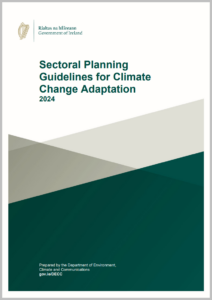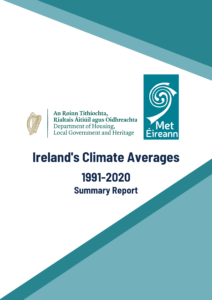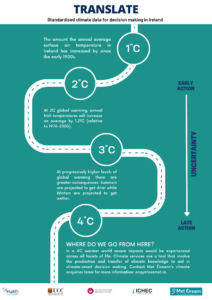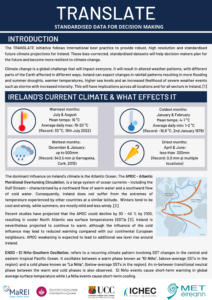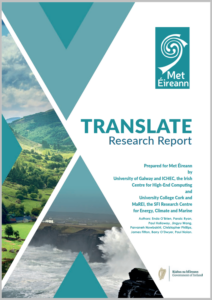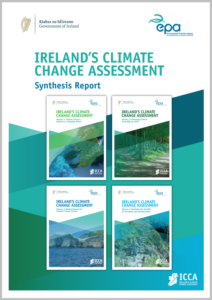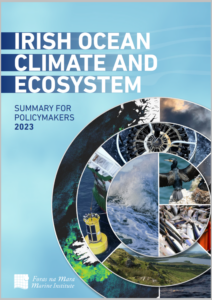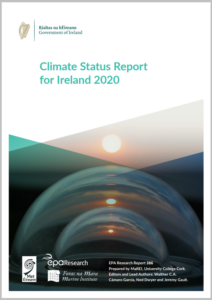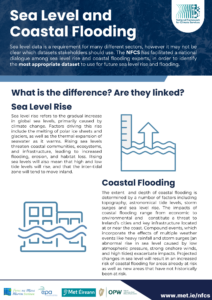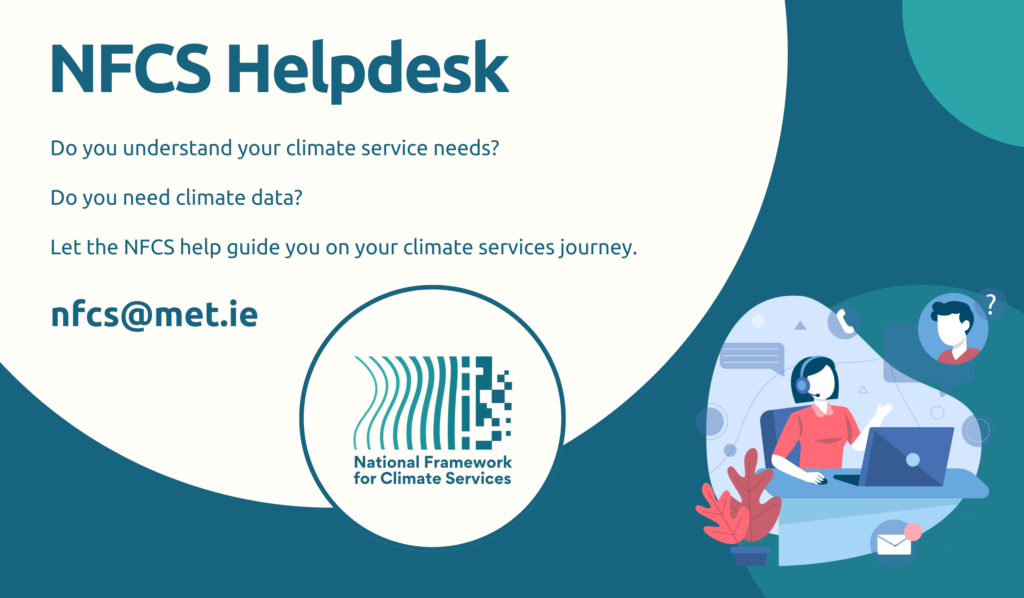
The National Framework for Climate Services (NFCS) connects climate services providers and users to facilitate the creation of user driver climate services. The NFCS supports the development of Sectoral Adaptation Plans (SAPs) by engaging with project teams to provide tailored services and information. In addition to providing data, the NFCS is your guide to climate science, services and information during the development and implementation of your SAPs.
View the video below to find out more about the NFCS:
NFCS SAP Support
The NFCS offers sectoral climate support throughout every step of the SAP process. This support ranges from information on Ireland’s climate and weather events, to climate services to support decision-making. Through our members, the NFCS can provide expertise across the spectrum of climate information for your impact assessment.
Community expertise range from climate projections, flooding and flood risk management, water flows and adaptation guidance, agricultural climate services and more. See some of our members here:

Sectoral Adaptation Plans Guidelines
Sectoral Adaptation Plans are now underway following the publication of the 2024 National Adaptation Framework (NAF). The associated Sectoral Planning Guidelines, published by the Department of Environment, Climate and Communications, provides guidance on how to develop a climate adapation plan.
These guidelines set out 6 steps for developing your plan. This webpage provides an explanation of each of these steps below, highlighting climate services from a range of suppliers that may aid in the preparation of your SAP. The NFCS across all its members, can support the development of SAPs at each and every step.
To find out more about any of the below supports, contact the NFCS Helpdesk.
Step 1: Preparing the ground
Developing a key understanding of both the climate of Ireland and climate change is essential to be able to develop a Sectoral Adaptation Plan. Building a baseline understanding of these topics will provide a platform to enable the development of smart adaptation actions relevant to each sector.
To understand the Climate of Ireland and Climate Change and what it is that drives it, there are a number of resources available across the NFCS:
Climate of Ireland: Click here to find out more on our website.
Additional information can be found on this storymap.
Climate Change and Ireland: Click here to find out more on our website.
Explore how Ireland’s climate has changed on this storymap.
Introductory Information
Irish Climate Summaries: Current and Future
There are several reports and documents that take an in-depth look at Ireland’s climate, its current state, and the changing climate from present into the future.
Click on each of the reports below to look at Ireland’s climate in terms of future climate projections until the end of the century, a comprehensive look at climate change in Ireland, the climate’s effect on Ireland’s oceans and the status of climate in Ireland.
Climate Ireland
Climate Ireland is Ireland’s national adaptation portal hosted by the EPA. This page provides information, advice and support to help Ireland adapt to our changing climate.
It is the home of the Climate Ireland Data Explorer – where you can find the TRANSLATE data in map form, as well as the downloadable files.
The portal also offers adaptation guidance and is the home for the National Climate Change Risk Assessment documents.
This page is key in the development of your Sectoral Adaptation Plans.
Step 2: Climate Impact Screening
The climate impact screening step is a key step in understanding the type of adaptation actions you need to develop in order to adapt your sector to changing climate conditions. This step requires sectors to catalogue the weather and climate conditions that have impacted them in both past and future contexts. To help sectors build this profile, the NFCS suggests using the below information and webpages as sources of past events and the potential future climate in Ireland.
To prepare and build a profile of weather and climate events that have impacted your sector, it is important to have a list of the major events that have happened and when they happened.
From a national perspective, the below timeline accounts for some of the major weather events across Ireland.
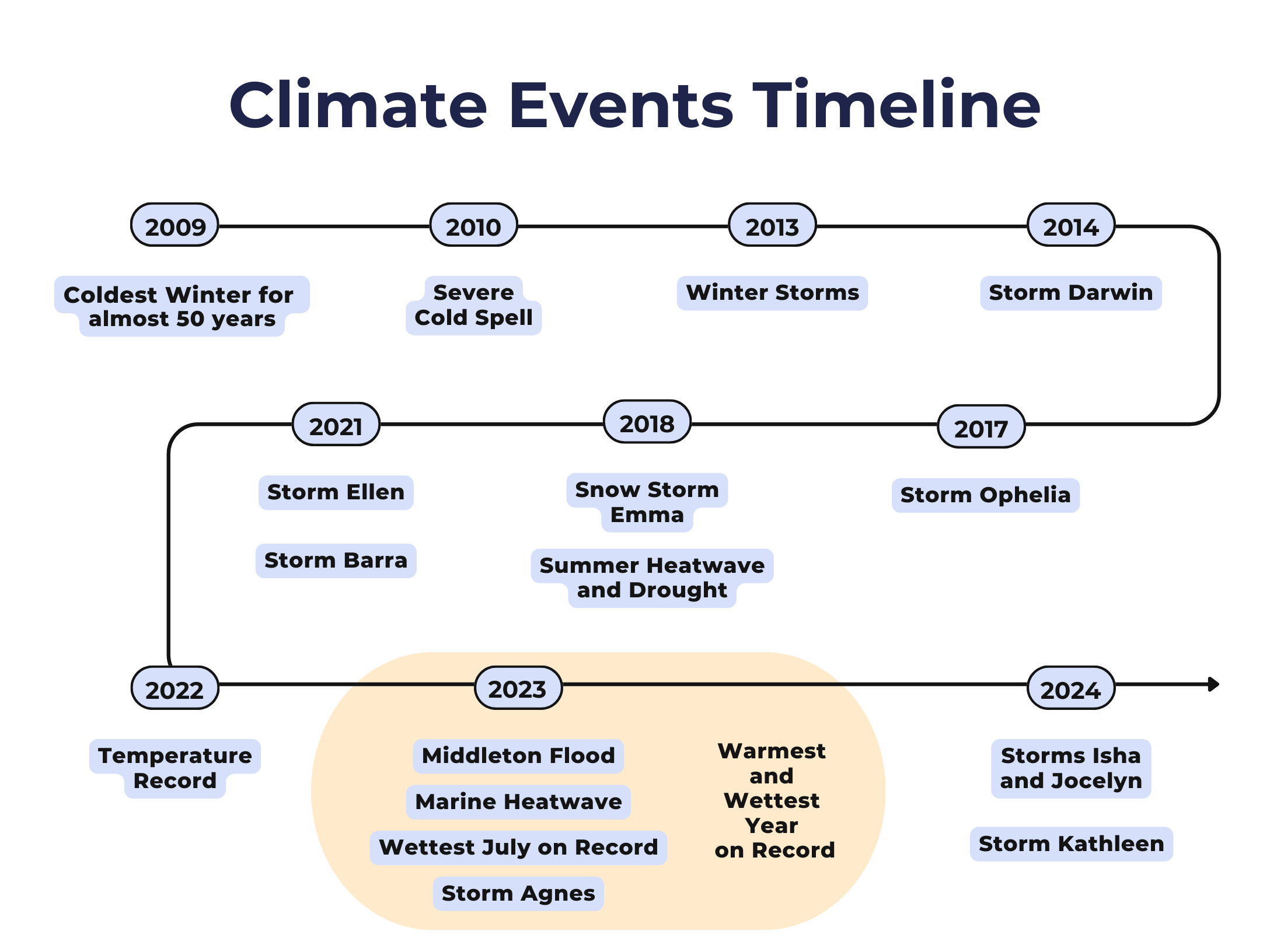
To develop a similar timeline for your specific sector, follow the link below to the major weather events page where all the historic weather and climate pages have been documented.
Climate Impact Screening, requires you to not only captured past events that have impacted your sector, but also look at future climate impacts.
In order to do this, you will need to look at future climate projections. To align with the guidance documents and other sectors, using the standardised projections for Ireland is essential. These are the TRANSLATE projections from Met Éireann.
They are readily available on the Climate Ireland platform to view. On the platform, you can view the data visually as maps, or you can download the data to further examine it.
More information on the data is available by contacting nfcs@met.ie.
Step 3: Prioritisation
When developing a SAP there are many risks and impacts that you could address. However, it is important to be able to prioritise the critical and most impactful risks on your sector. This exercise allows SAP developers to understand where their sector is most at risk to climate. The National Climate Change Risk Assessment (NCCRA) by the EPA has developed a risk register, detailing the most appropriate risks in an Irish context to focus on when developing a SAP. The risk register they have developed is at a national scale, based around themes, and as such may not all be relevant to your sector. It is imperative to prioritise risks specific to your sector in this section. This risk register is, however, an invaluable resource when looking to prioritise risk assessment for your SAP. For more information on this, contact the EPA or visit Climate Ireland – https://www.climateireland.ie/impact-on-ireland/national-climate-change-risk-assessment/ for more information.
Step 4: Priority Impact Assessment
This is the stage of the process where climate information and services are critical to support decision-making. It is essential to have the appropriate supporting climate data to understand the future risk to a sector to climate change. Undertaking a climate risk-assessment to understand how climate hazards will impact the exposure and vulnerability to your sector is essential for decision-making. The NFCS can offer supports in a range of different ways during the Priority Impact Assessment step of the process.
Climate Risk Assessments
Climate risk assessments are an essential part of the process for developing an adaptation plan to climate change. Undertaking risk assessment provides a scientific evidence base to the future climate risk. A more detailed assessment enables sectors to understand future climate and weather-related hazards and impacts accounting for spatial and temporal variations in these and associated uncertainties.
This detailed assessment can also facilitate the contribution of exposure and vulnerability metrics, ensuring a comprehensive view of future climate risks is defined.
There are two types of data driven risk assessments:
- Semi-quantitative
- Fully-quantitative
National Climate Change Risk Assessment (NCCRA)
- The methodology is a working document and the final methodology will be available along with the final report, summary for policymakers and all accompanying reports in Q1 2025.
- Technical Guidance for Sectoral Risk Assessment has also been developed as part of the process to ensure consistency across national and sectoral planning. This guidance assists sectors in implementing climate change risk assessments that are consistent with the National Climate Change Risk Assessment Methodology.”
Semi-Quantitative Risk Assessment
Semi-quantitative risk assessment is an established approach to climate risk assessment. Implemented not only by the new Irish NCCRA being developed by EPA, but also follows best practice internationally from EU, UK and New Zealand climate change risk assessments.
Semi-quantitative risk assessments use a combination of nationally consistent sources of climate change data, qualitative information (assigned a numerical value) and stakeholder and expert knowledge. In this case, the risk assessment would use three types of data sets, climate change hazard (TRANSLATE), exposure to climate change and vulnerability to climate change.
This approach provides a more detailed understanding of the climate change risks and opportunities and adds scientific weighting to an assessment of climate risk. Semi-quantitative studies can be the first step to understanding and highlighting potential climate risks and can inform you when a fully-quantitative study is required.
Offering sectors the ability to define climate risk is important. Through the incorporation of climate data, and sector specific exposure and vulnerability metrics, the semi-quantitative risk assessment can do this.
TRANSLATE Semi-quantitative risk assessment framework
As part of the TRANSLATE project, the project team developed a semi-quantitative risk assessment framework. The framework provides a step-by-step guide to a risk assessment, with the ability to tailor it to the individual user.
The framework is hosted by Met Éireann and the NFCS who can work closely with each sector to calculate a risk assessment specific to them.
This risk assessment approach incorporates future climate projection hazard data from TRANSLATE and sector specific data on exposure and vulnerability. The assessment is GIS based and allows for a visual representation of the produced climate risk. The video below gives a brief overview of how the NFCS can help with your risk assessment.
This additional case study looks at a 6 step process on how to use the TRANSLATE data to define climate risk in a semi-quantitative risk assessment method.
TRANSLATE Case Study: Missed Education Days. Click here to view full screen storymap.
Data to Support Climate Risk Assessment
Imperative to any risk assessment is the availability and accessibility of quality datasets to support the quantitative study being completed. The NFCS’s role in the coordination of climate services and information in Ireland, has enabled the collation of many of the climate hazard datasets to support your Sectoral Adaptation Plans. These climate hazard datasets are in line with NCCRA recommendations. Below are some of the common climate hazard datasets applicable to the development of SAPs.
TRANSLATE Projections
The TRANSLATE project is a Met Éireann lead initiative to standardise future climate projections for Ireland and develop climate services that meet the climate information needs of decision makers.
TRANSLATE offers future climate projections that align with NCCRA technical guidance and can support the development of SAPs. The projections allow users to examine what Ireland may look like in a future climate at present day, mid-century and end of century timescales and across different potential emission pathways (RCPs), from early action to late action.
TRANSLATE data is freely available to all on Climate Ireland’s data explorer, or by contacting Ireland’s Climate Service helpdesk – nfcs@met.ie.
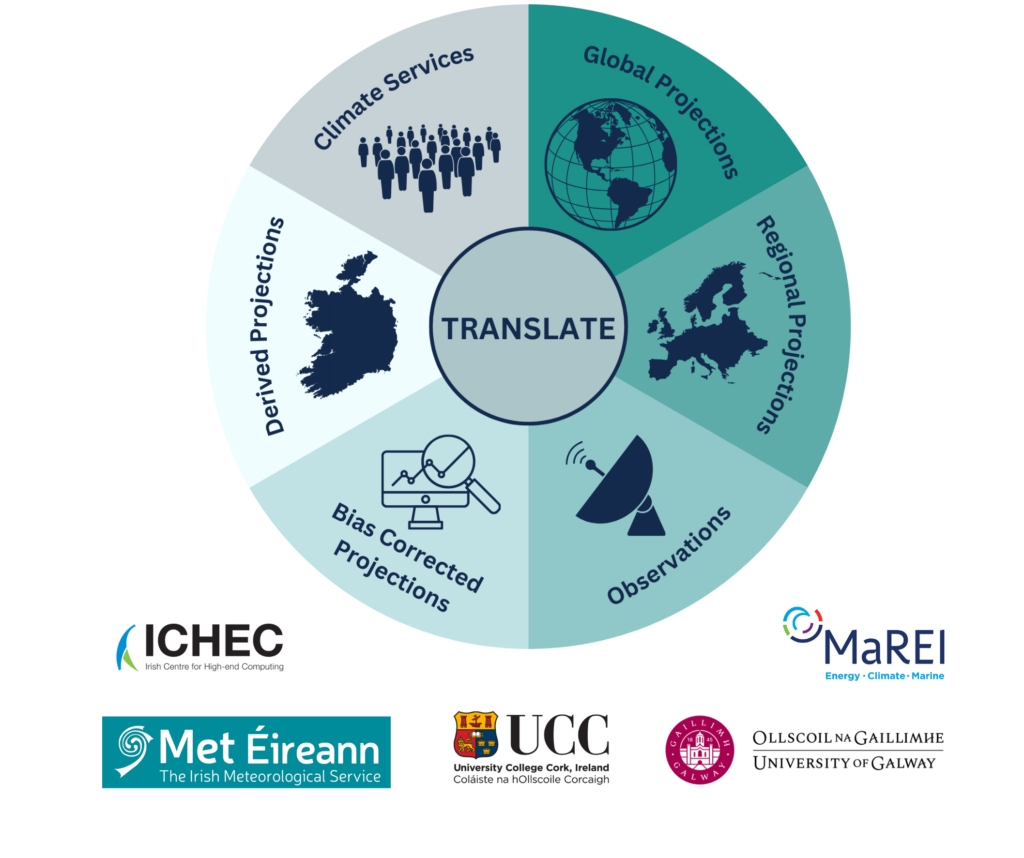
Nolan and Flanagan 2020 Projections
ICHEC’s CMIP5 Nolan and Flanagan 2020 climate projections, offer some of the climate variables that are not yet available from the TRANSLATE projections.
These include wind and snowfall variables.
In the absence of these variables through TRANSLATE, the NFCS recommend that the Nolan and Flanagan projections be used.
These are available by contacting ICHEC for the data.
*Note* – The TRANSLATE team are currently working on developing wind and relative humidity variables
Flooding – Accessing Data
A significant risk for many across the country is flooding. It poses risk from national to local level at present, and will continue to do so in the future.
Floods are created through a number of different ways:
- Pluvial
- Fluvial
- Coastal
- Groundwater
Find out more on what each of these mean on Floodinfo
Data to assess future flooding is available for Ireland. There are different datasets available for different types of flooding.
Pluvial and fluvial – OPW’s CFRAM & NIFM.
Coastal – OPW’s National Coastal Flood Hazard Mapping
Groundwater – GSI’s GWFlood – Groundwater Project
For more information and to view flood maps for each of different flood types above, go to floodinfo.ie/map/floodmaps
or https://data.gov.ie/
To access the data, contact the OPW.
Sea Level and Costal Flooding Guidance
Step 5: Develop Your Plan
This step is the culmination of all the work done on climate impact screening, climate risk assessments and beyond. Identifying adaptation actions to be put in place during the implementation and monitoring phase of the plan.
At every stage of the plan, including this step, the NFCS is available and ready to help advise you on climate information and services. The NFCS welcome engagement throughout the process and are available to support your climate service and information needs by contacting the Helpdesk at NFCS@met.ie .
Step 6: Implement, Evaluate and Review
At this point, your plan has been published and approved for action. Key to the whole process is that the SAPs need to define actionable tasks which are implemented and evaluated. As the coordinator of climate services across Ireland,, the NFCS is there to support the implementation of your plan. This may take the form of engaging in steering committees for projects coming out as actions in the SAPs; assisting in working groups for sectors trying to build on the actions set out in the plans or to offer assistance and guidance with any climate service and information needs.
The NFCS has a helpdesk that available to meet and assist sectors.
